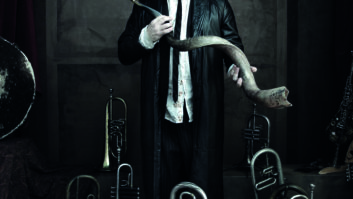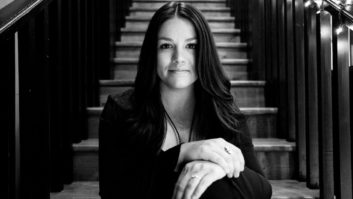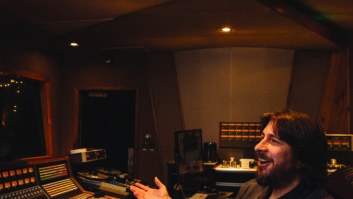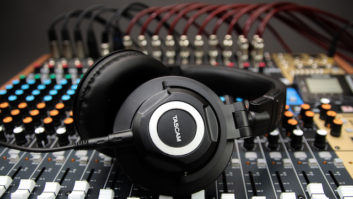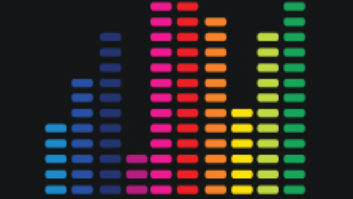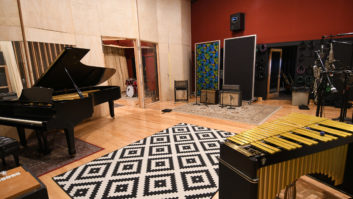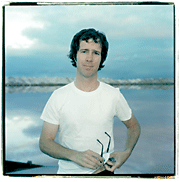
photo: Ingvar Kenne
Walking down the street in Nashville one day, Ben Folds saw a sign that a studio was for lease. Upon further inspection, Folds discovered that the studio in question was the complementary room to the legendary RCA Studio B, where Johnny Cash, Elvis Presley and Carl Perkins laid down some of their most memorable tracks. The A Studio was also home to Folds while he was recording some demos very early in his career, when the studio was known as Javelina Studios.
Folds picked up the lease and moved in four pianos, two drum kits and a handful of recording equipment. The room — originally designed as a large orchestral space — became Folds’ musical home while he went through one of his most prolific recording periods — three solo EPs (Speed Graphic in 2003, Sunny 16 in 2003 and the 2004 Super D), an EP with Ben Lee and Ben Kweller and the 2004 William Shatner release, Has Been.
“I was writing and recording whenever I had a chance and I thought, ‘Hey, it’s time to put an album out,’” Folds says of the inspiration to record Songs for Silverman, his latest offering. “I had nine songs left over from the [EP] process and it seemed like I could finish it really quickly and turn it into an album. The songs were really good, but the recording of the songs didn’t sound any different than the EPs; it kind of seemed like a leftover from the EPs. So I went back to the drawing board and thought about how I wanted to record.”
That led to inviting drummer Lindsay Jamieson and bassist Jared Reynolds to come and knock the songs out in a live setting. “Then I wrote a few other songs and I had an album,” Folds says. The choice to produce these sessions himself, Folds says, came easily. “I was ready to be really picky about things that producers weren’t going to be picky about. And I don’t really care to go over certain things that a lot of producers are going to want me to do. I really don’t want someone to stop the machine in the middle of one of my takes and tell me to start again,” he says.
Folds and engineer Joe Costa had previously come up with a standard process of working together during the EP and Shatner sessions. “Joe just gets it,” Folds says. “He’s a good engineer, and the two of us have come up with collective opinions and approaches on how we like to record. And, I trust his ear a lot.”

In fact, Folds turned most of the engineering chores over to Costa. “I can do it, but I don’t really like where my brain goes when it goes there,” Folds says. “I mean, I’m aware that Joe is always working on things. My thing with engineering is that I’m very opinionated about how something is going to be recorded and how it’s going to fit into the mix and the arrangement. To me, the arrangement and the recording are always married and holding hands. I don’t say, ‘Well, here’s the bass drum sound and that’s my sound.’ I go into a song and I think, ‘Well, this is going to have a lot of space in it. Let’s open up the bass drum.’ And, ‘I don’t really like that RE-20 there. Let’s try something else.’ I know my mics and my pre’s and what I like.”
That said, Costa selected the mics to be used during the tracking dates. On the drums — the kits were Folds’, a former drummer, but were played by Jamieson — Costa put a Shure SM7 on the kick, a 57 on the snare and SM7s on the rack and floor toms. Costa also put up a pair of Neumann 582s over the kit. “I was never the type of person that used omni mics as overheads before because I just never dug ’em,” Costa explains. “But in this giant room, they sounded great.” On some tunes, Jamieson’s tracks were recorded in an iso booth, but the 582s didn’t work in there: “It just got too washy, so we got a pair of Sony C-48s and I would do those in an ORTF [configuration] above the drums, kind of close.” On a couple of songs where Folds wanted a mono kit sound, Costa took the C-48s off the kit and added a pair of U47s.
Bassist Reynolds played through an Ampeg B-15 while the team tracked the first two songs of the sessions: “Jesusland” and “Bastard.” “The Ampeg sounded so great and then, all of a sudden, half of the tubes weren’t working,” Costa says, laughing. “We thought we’d get it fixed, but we never did. Ben had a Hiwatt hanging around, so we plugged it in and it sounded pretty cool.” Costa miked the Hiwatt with an SM7 and also ran the signal through a Demeter tube DI. “On the first two tracks, I had him going through those UA 610 tube mic pre’s into LA-2As, but I ended up switching him to APIs and 1176s because of the way he was playing.”
To live up to Folds’ desire to have Songs for Silverman sound different than the previously released EPs, Costa moved away from the Neumann CMV-563 mics that he’d used on the piano. “We would do a high-low miking on it and maybe a pair of UA 610s and a pair of 1176s, and it sounded huge,” Costa reports. “But as we started doing the record, he kind of wanted to get away from that hugeness.” So they turned to a pair of gray Lomo microphones from Russia. “They all sound completely different,” Costa says, “and have these weird power supplies. I’d plug a pair in and everything in the studio would start humming. I’d fix the ground on one of them and the hum would go away but the other mic wouldn’t work. It was a nightmare.” Eventually, a new power supply was built and, along with a ribbon mic at the back of the piano for the low end, the tracks came together.
“There are two tracks on the album, ‘Gracie’ and ‘Sentimental Guy,’ that were recorded at an earlier time with the CMVs and the piano sounds a lot bigger,” Costa points out. “We went away from the big piano sound and when the band was hitting it hard, the Lomos sounded great because I found myself EQ’ing the CMVs to make them cut through and I didn’t have to do that with the Lomos.” The piano signal also went through a pair of Neve 1081s and 1176s before going to RADAR.
Folds sang into a white Lomo mic rather than the Neumann U47 that was used during the EP dates. “That was pretty cool because it was a different sound,” Costa recalls. “And instead of going tube after that, we used the UA 2108 solid-state mic pre’s, a Pultec EQ and a dbx compressor after it.”
When Folds recorded the first EP, he was aiming for an all-analog experience, but he abandoned that approach after a multitrack malfunctioned and he had to re-record several songs. Now he is learning to embrace digital, using RADAR as his recording medium, though he admits to still being somewhat mystified by the plethora of choices. “I’m a live performer, and I think the process of having too much choice and control in the recording puts me off my game just a little bit. I don’t want to know that I can do this and this and this. I’ve been caught up in that thing where you’re looking for a plug-in to slow your track down and that takes four days of crunching numbers and synching things up and listening for artifacts when I could have just f***ing played it again.”
The album was mixed by Michael Brauer on Folds’ Neotek Elite console, a considerable challenge as several songs required complex mix moves and there was no automation. Folds asserts that he loved Brauer’s style of mixing because, “he has a way of putting the vocal so up front that the singer wants to crawl in a hole somewhere. He manages to keep it attached to the rhythm section with this really weird organic thread.”
Some months later, as Folds takes some time off in his adopted homeland of Australia, he looks at this recording as one of his best. “I wish I could figure out in what way it’s better. I really like most of what I’ve done for one reason or another, but I had a problem with most of my records and I don’t know what it is, really,” he says. “I don’t have that problem with this record. There’s something that’s not bothering me about this record.”
